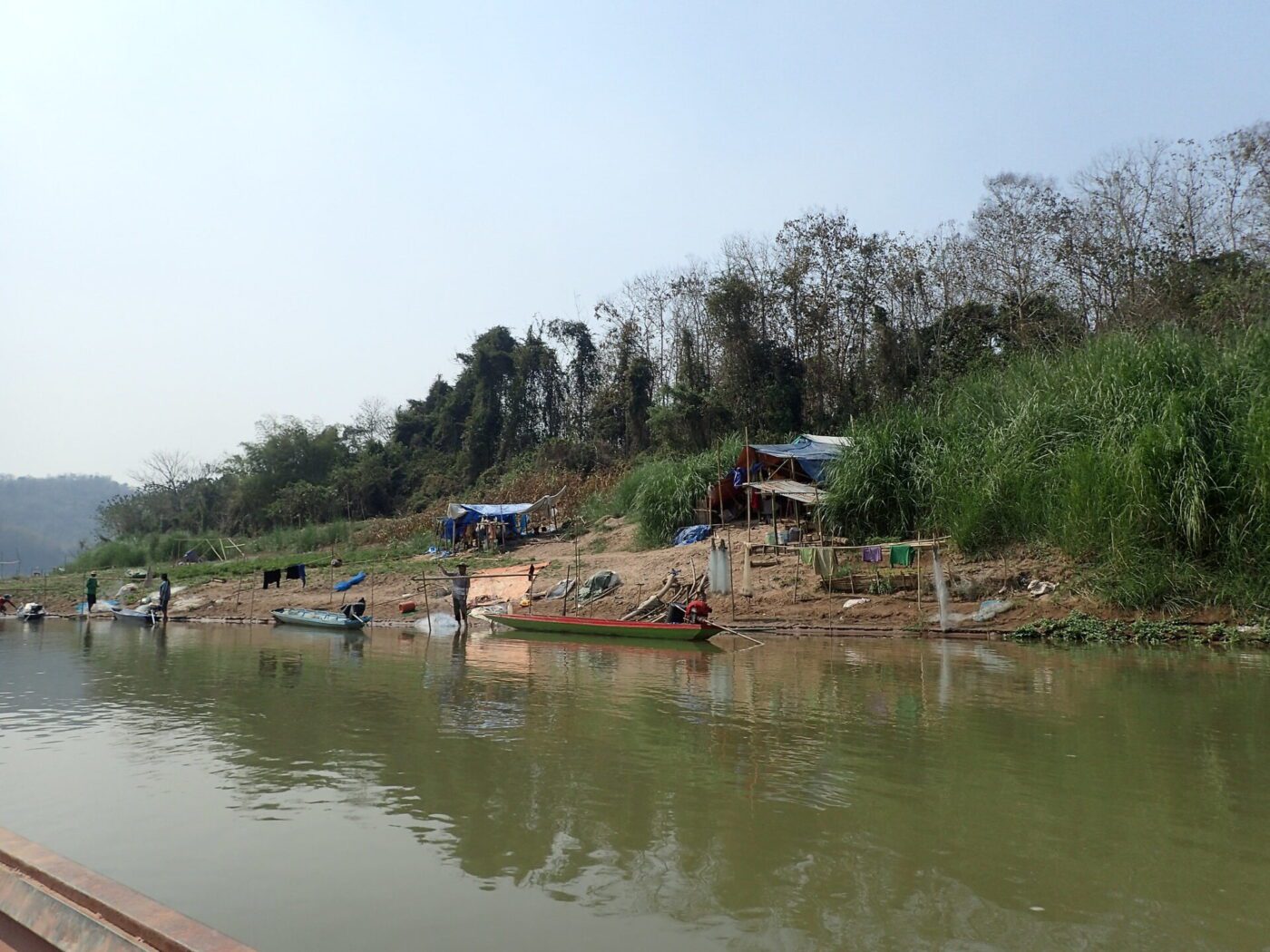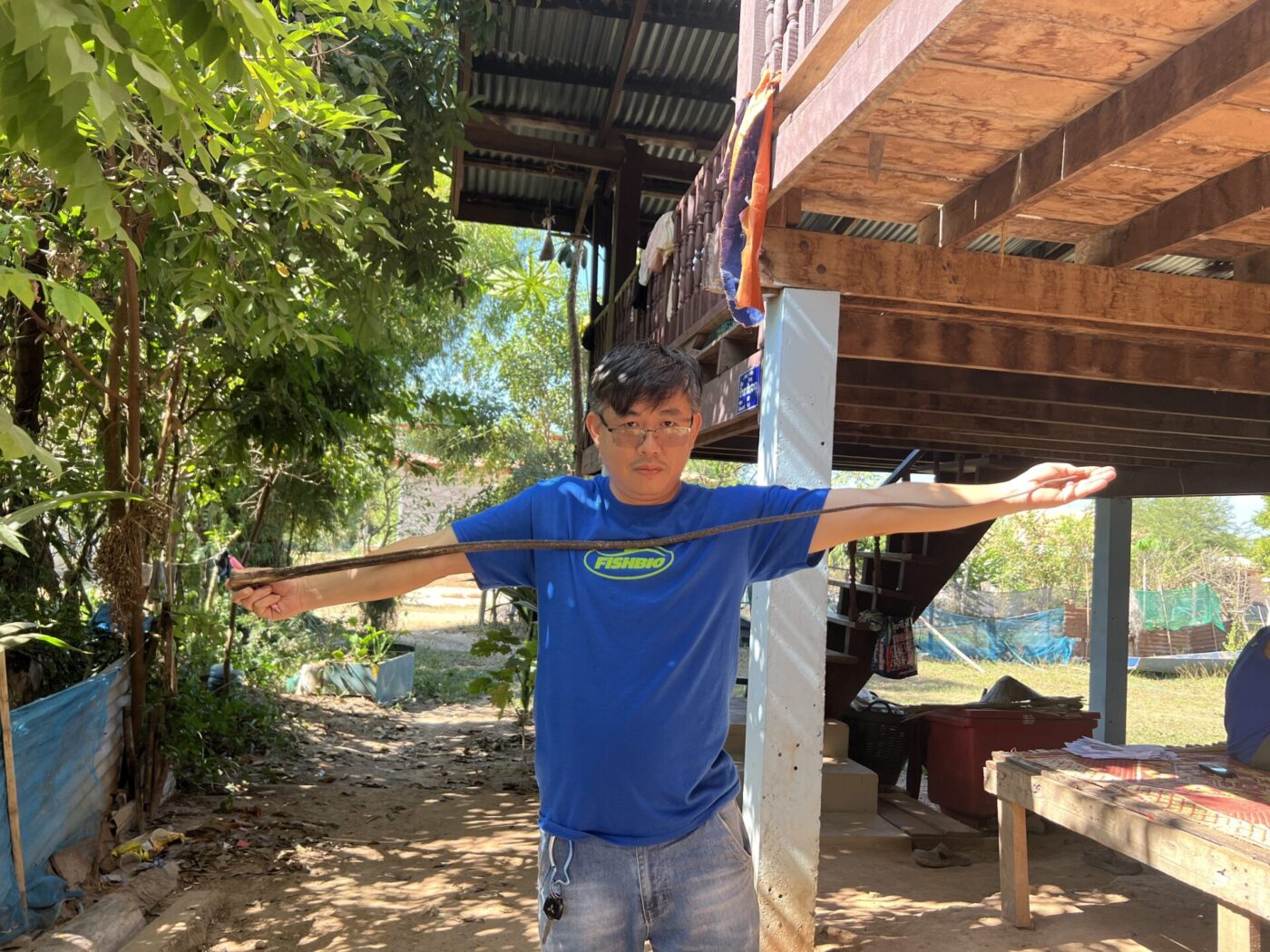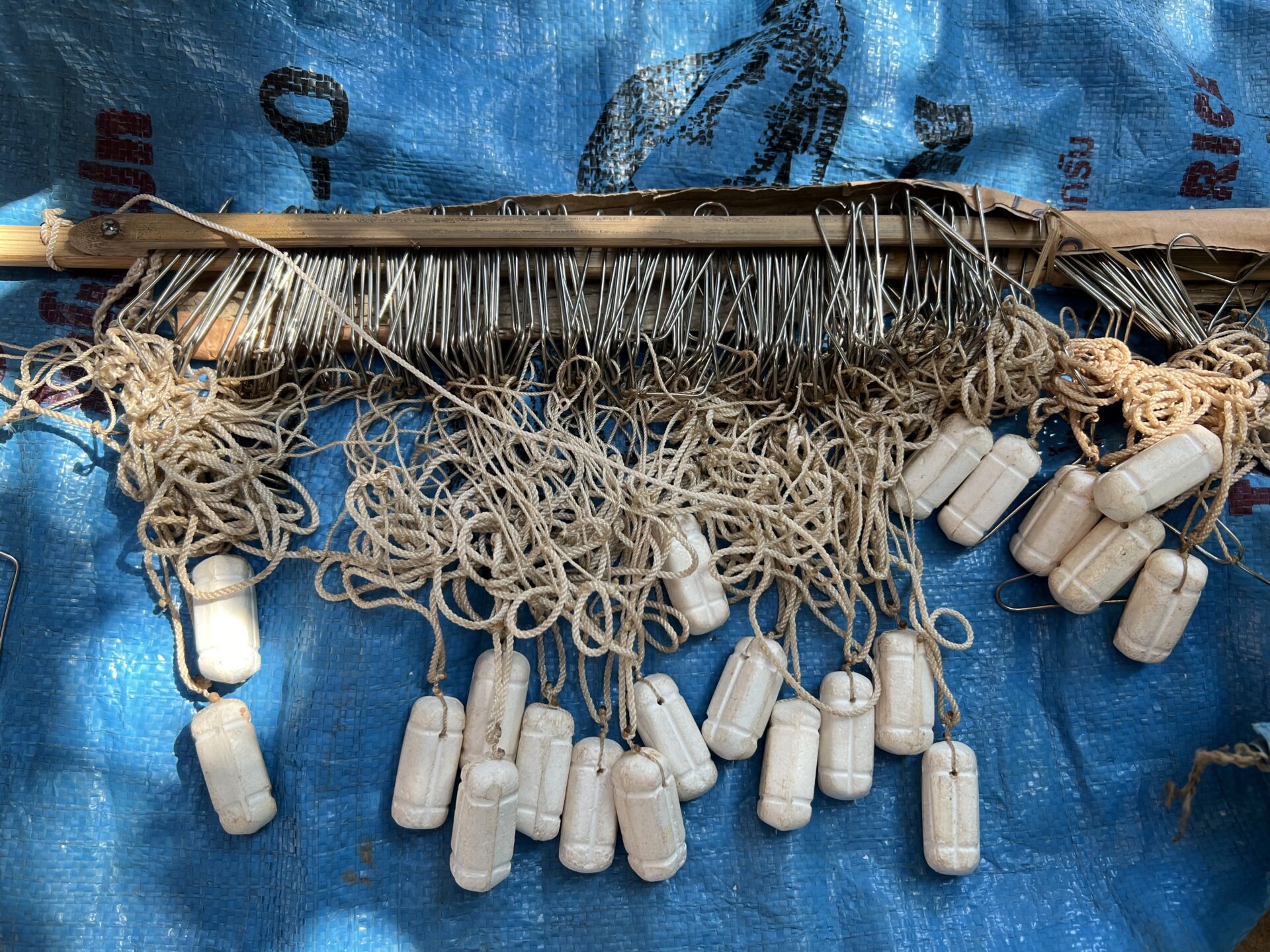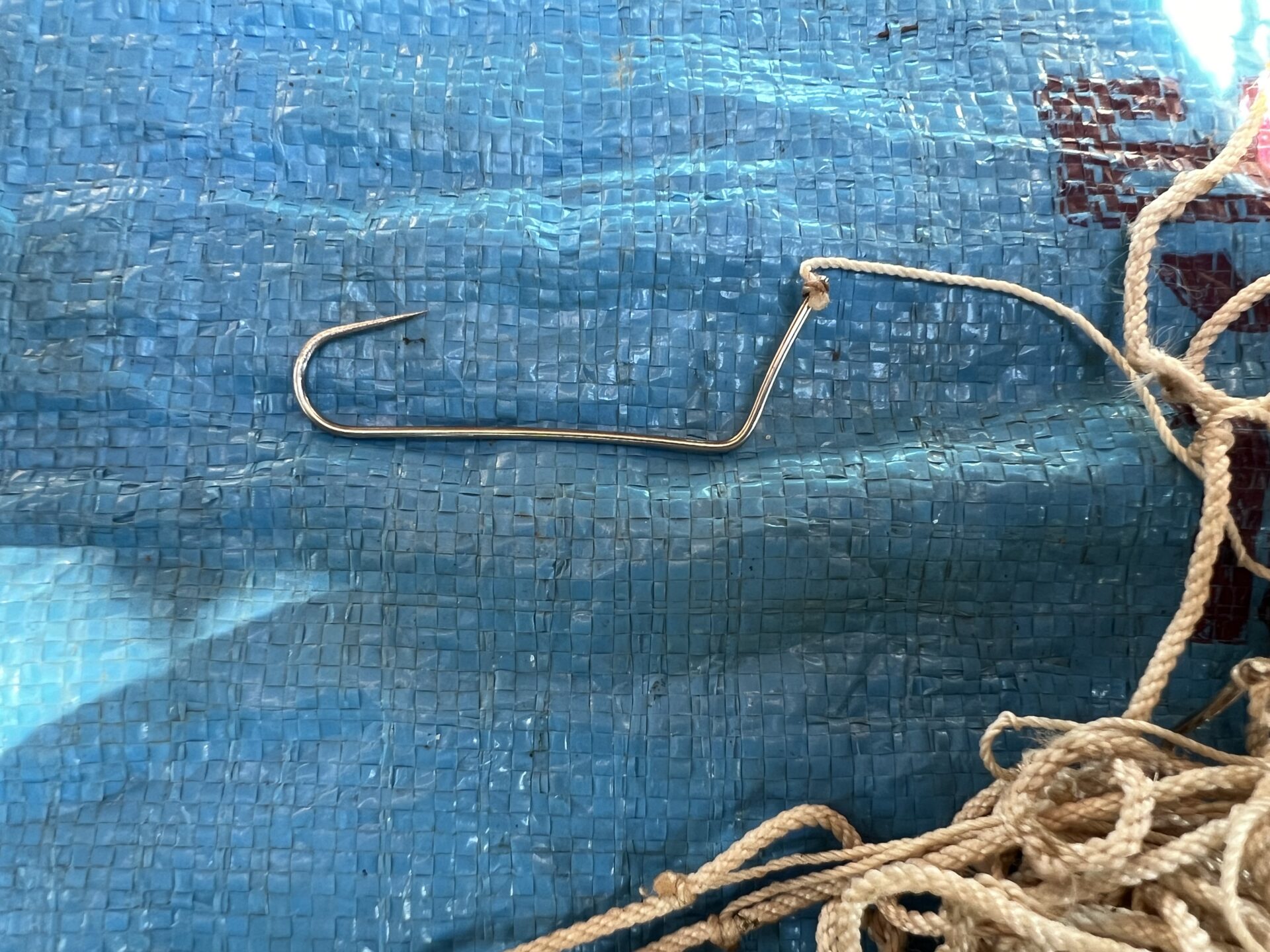Monday February 12, 2024

Out in the field, FISHBIO biologists often have the opportunity to talk to local residents and fishers and learn about their experiences on the river. These interactions are particularly insightful for the staff at our office in Lao People’s Democratic Republic (Lao PDR), as fishing there is not just a recreational activity, but a critical source of livelihood and food. This means that the fishers plying the waters of the Mekong are intimately familiar with the river and the fish that reside within it. Often, discussions with these local experts can highlight the challenges to managing and conserving fish diversity while balancing river-side residents’ need for income and food.

A fishing camp on the banks of the Mekong River in Laos.
While in the field conducting research, FISHBIO biologists recently had an insightful encounter with an older resident of Hinlad Village in Hinboun District, Khammouan Province. This individual – who will be referred to as “Uncle” to protect his identity – has been fishing on the Mekong since 1975. Throughout his time on the river, he has captured remarkable fish. Uncle said that his most memorable catch was a very large Jullien’s golden carp (Probarbus jullieni, a critically endangered species known locally as “Pa Ern”) – a female weighing 50.5 kilograms (over 110 pounds) that he captured using a nylon net. He thoroughly enjoys fishing using multiple different gear types, including gillnets and hooks.

FISHBIO Lao biologist Sinsamout with the tail of the captured stingray.
In December 2019, just before the new year, Uncle made another significant catch – a 200 kilogram (441 pound) female giant freshwater stingray (Urogymnus polylepis, an endangered species). He made this catch using a newly introduced fishing method involving lines with multiple large hooks, which resemble the longlines used by commercial fishers to target fish like halibut and tuna in the ocean. Despite being aware that the stingray is a protected species under the aquatic and wildlife law of Lao PDR, Uncle decided to harvest the ray. As it was a very large fish and he did not want to lose it, he killed it immediately by striking it with a wooden paddle. He then asked his friends to help move the ray to the shore, where it was processed into small pieces to be sold.
Uncle clarified that he is aware the rays are declining, and explained that he believes the technique he used – the longline and large hook method fishers have learned from neighboring countries – has led to a noticeable decline in multiple megafish species as well as other threatened megafauna like the critically endangered Asian giant softshell turtle (Pelochelys cantorii). In spite of this, he said that local fishers are dependent on the fish the river provides for both income and food, and stingrays have long been traditionally consumed in the region. Locals note that although the skin is tough, the meat of stingrays is similar in consistency and taste to pork. They consume the entire body of harvested animals (though the tail is sometimes kept as a trophy), and use it to prepare various dishes such as fried stingray with onion and basil, and meat salad (known locally as “lap”).

A set of large hooks used to capture big fish like giant freshwater stingrays.
Spurred by high demand from Vietnamese and Chinese restaurants, the use of fishing lines with multiple large hooks has created a commercial enterprise for catching monster fish in the Mekong River. The high prices that large fish like giant stingrays can fetch in the market make targeting them a tempting prospect for local fishers. Despite notable declines of megafish, government laws and regulations regarding fishing controls remain vague, and have generally not been effectively implemented. Fishers like Uncle understand the negative impacts that introduced fishing methods are having on local ecosystems, but they are faced with the dilemma of balancing traditional fishing practices with changing regulations and commercial demands. These challenges are by no means unique to Lao PDR, but reflect a common issue across all rivers where people have relied on the fish community for food and income for many generations.

The large hooks being used by Lao fishers are imported from neighboring countries.
However, hope can be found in management approaches prioritizing direct involvement of local fishers and community members. Providing a sense of ownership and officially recognized authority over the rivers where people live and work has been shown to be successful in locations throughout the Mekong. In particular, establishing Fish Conservation Zones and empowering communities to manage their own resources can help protect critical habitats for commercially important and endangered fish species alike. Though conflicts may arise, providing people the tools to resolve them peacefully can improve the odds of success for this locally-driven approach to fisheries management. Meeting the needs of people while ensuring the sustainability of the ecosystem will always be a balancing act, but it is one that has been performed for thousands of years in the Mekong Basin. New challenges from growing human impacts mean that approaches to management must be adapted to the modern world, so that people like Uncle and his descendants can continue to rely on the bounty that the river provides.
Header Image: a Lao fisherman checks his nets.
This post was featured in our weekly e-newsletter, the Fish Report. You can subscribe to the Fish Report here.
